Trees Birds Mammals Fish Amphibians Reptiles
Wild Algarve
Bookshop
Russula caerulea (Pers.) Fr. - Humpback Brittlegill
Phylum: Basidiomycota - Class: Agaricomycetes - Order: Russulales - Family: Russulaceae
Distribution - Taxonomic History - Etymology - Identification - Culinary Notes - Reference Sources
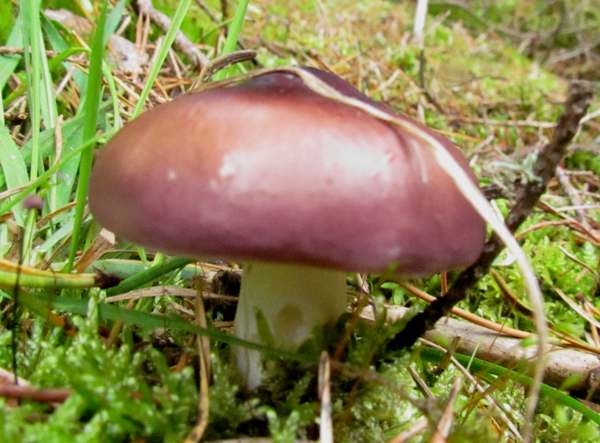
This is one of the very few purplish brittlegills which can usually be identified in the field without resorting to chemical tests. Its umbonate brownish-purple cap is quite distinctive.
Distribution
This brittlegill is fairly common in pine plantations and under pines in parkland and gardens throughout Britain and Ireland as well as in many other parts of Europe. This brittlegill mushroom is also commonly recorded in North America.
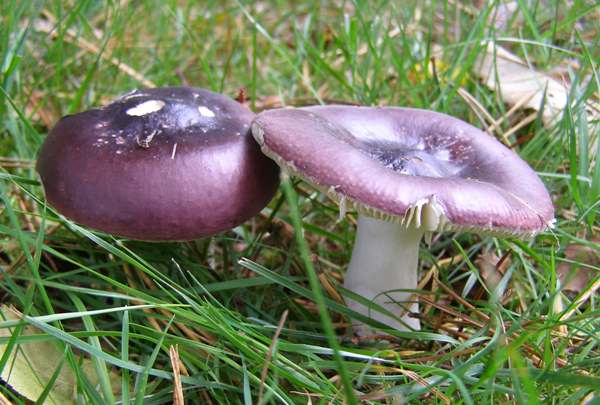
Taxonomic history
The Humpbacked Brittlegill was described in 1801 by Christiaan Hendrik Persoon, who gave it the binomial scientific name Agaricus caeruleus. (Most of the gilled mushrooms were included initially in the genus Agaricus, the contents of which has since been largely dispersed into many other newer genera.) The currently-accepted scientific name Russula caerulea dates from an 1838 publication by the great Swedish mycologist Elias Magnus Fries.
Synonyms of Russula caerulea include Agaricus caeruleus Pers., and Russula amara Kucera.
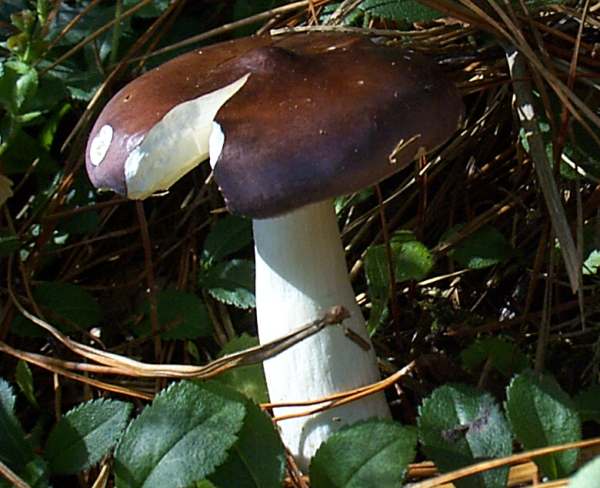
Etymology
Russula, the generic name, means red or reddish, and indeed many of the brittlegills do have reddish caps (but many more of the brittlegill mushrooms are not red, and several of those that are usually red can also occur in a range of other colours!).
The specific epithet caerulea suggests that this mushroom is deep blue, but purple-brown is usually its dominant colour component.
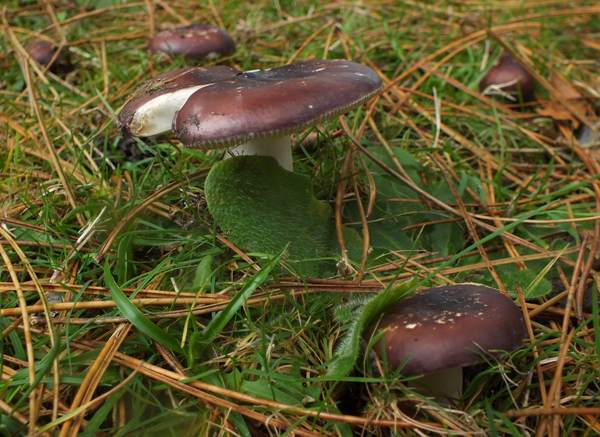
Identification guide
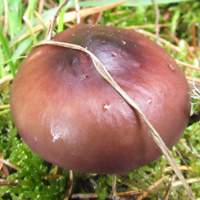 |
Cap
4 to 8cm across; various shades of glossy purplish brown or vinaceous brown; convex, with a low central umbo; peeling typically 1/2 to 2/3 to the centre. |
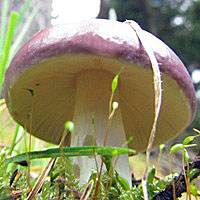 |
Gills
Cream, becoming ochre with age.
Stem
3.5 to 6cm tall and 0.7 to 1.4cm dia; white. |
|
Spores
Ellipsoidal, 8-9 x 6.5-7.5µm, ornamented with sharp warts up to 1.2µm tall with a few connecting lines but not forming a reticulum.
Spore print
Dark yellow . |
Odour/taste |
Odour not distinctive
Taste of gills and cap flesh mild; cap cuticle bitter. |
Habitat & Ecological role |
Mycorrhizal with pine trees. |
Season |
July to November in Britain and Ireland. |
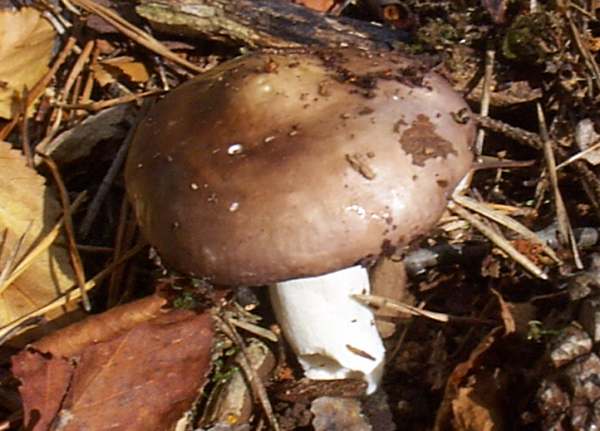
Culinary Notes
Russula caerulea is reported to be edible.
Reference Sources
Pat O'Reilly (2016). Fascinated by Fungi, First Nature Publishing
Geoffrey Kibby (2011).The Genus Russula in Great Britain, published by G Kibby.
Roberto Galli (1996). Le Russule. Edinatura, Milan.
English Names for fungi; British Mycological Society, 2013.
Dictionary of the Fungi; Paul M. Kirk, Paul F. Cannon, David W. Minter and J. A. Stalpers; CABI, 2008
Taxonomic history and synonym information on these pages is drawn from many sources but in particular from the British Mycological Society's GB Checklist of Fungi.
Top of page...
Fascinated by Fungi. Back by popular demand, Pat O'Reilly's best-selling 450-page hardback book is available now. The latest second edition was republished with a sparkling new cover design in September 2022 by Coch-y-Bonddu Books. Full details and copies are available from the publisher's online bookshop...